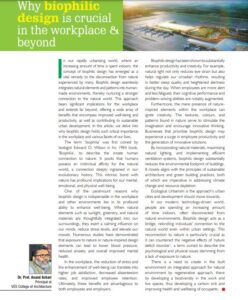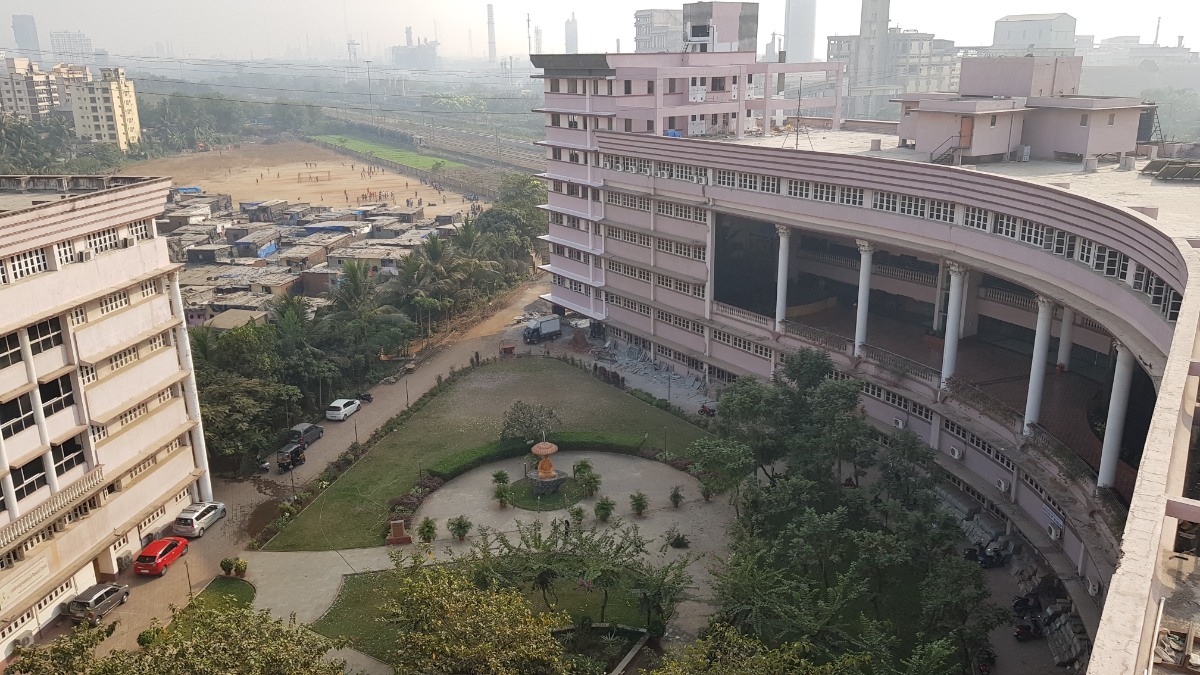In our rapidly urbanizing world, where an increasing amount of time is spent indoors, the concept of biophilic design has emerged as a vital remedy to the disconnection from nature experienced by many. Biophilic design seamlessly integrates natural elements and patterns into human-made environments, thereby nurturing a stronger connection to the natural world. This approach bears significant implications for the workplace and extends far beyond, offering a wide array of benefits that encompass improved well-being and productivity, as well as contributing to sustainable urban development. In this article, we delve into why biophilic design holds such critical importance in the workplace and various facets of our lives.
The term “biophilia” was first coined by biologist Edward O. Wilson in his 1984 book, “Biophilia,” to describe the innate human connection to nature. It posits that humans possess an instinctual affinity for the natural world, a connection deeply ingrained in our evolutionary history. This intrinsic bond with nature has profound implications for our mental, emotional, and physical well-being.
One of the paramount reasons why biophilic design is indispensable in the workplace and other environments lies in its profound ability to enhance well-being. When natural elements such as sunlight, greenery, and natural materials are thoughtfully integrated into our surroundings, they exert a calming influence on our minds, reduce stress levels, and elevate our moods. Numerous studies have demonstrated that exposure to nature or nature-inspired design elements can lead to lower blood pressure, reduced anxiety, and overall improved mental health.
In the workplace, the reduction of stress and the enhancement of well-being can translate into higher job satisfaction, decreased absenteeism rates, and improved employee retention. Ultimately, these benefits are advantageous to both employees and employers.
Biophilic design has been shown to substantially enhance productivity and creativity. For example, natural light not only reduces eye strain but also helps regulate our circadian rhythms, resulting in better sleep quality and heightened alertness during the day. When employees are more alert and less fatigued, their cognitive performance and problem-solving abilities are notably augmented.
Furthermore, the mere presence of nature-inspired elements within the workplace can ignite creativity. The textures, colors, and patterns found in nature serve to stimulate the imagination and encourage innovative thinking. Businesses that prioritize biophilic design may experience a surge in employee productivity and the generation of innovative solutions.
Biophilic design transcends its role in improving the human experience; it also champions sustainability and environmental responsibility. By incorporating natural materials, maximizing natural lighting, and implementing efficient ventilation systems, biophilic design substantially reduces the environmental footprint of buildings. It closely aligns with the principles of sustainable architecture and green building practices, both of which are imperative in addressing climate change and resource depletion. Ecological Urbanism is the approach’s urban cities and development should move towards.
In our modern, technology-driven world, people are spending an increasing amount of time indoors, often disconnected from natural environments. Biophilic design acts as a bridge, rekindling individuals’ connection to the natural world even within urban settings. This reconnection to nature is particularly crucial as it can counteract the negative effects of “nature deficit disorder,” a term coined to describe the psychological and physical issues stemming from a lack of exposure to nature.
There is a need to create in the built environment on integrated approach for natural environment by regenerative approach there by developing a biodiversity in the work and live spaces, thus developing a carbon sink and improving health and wellbeing of occupants.




